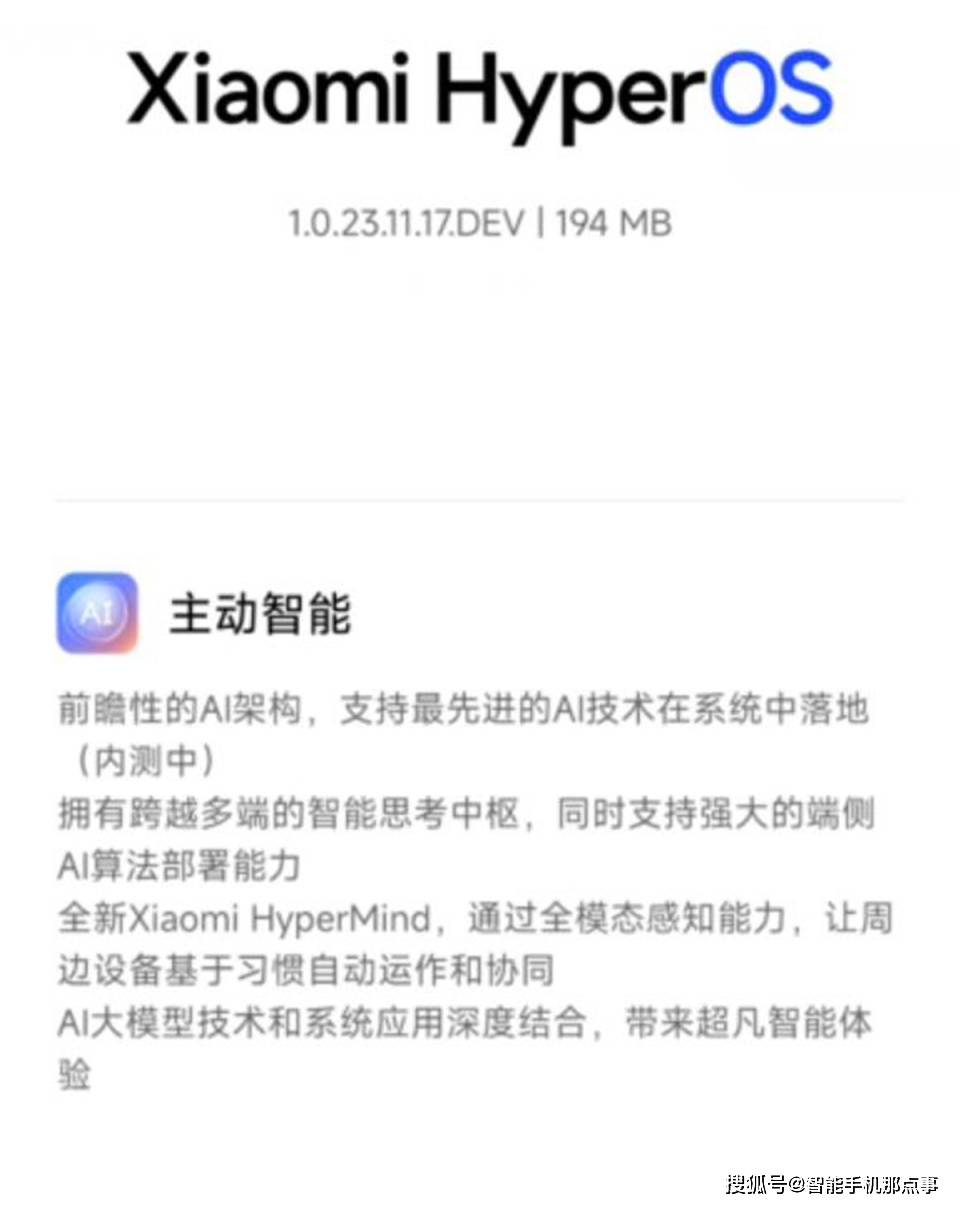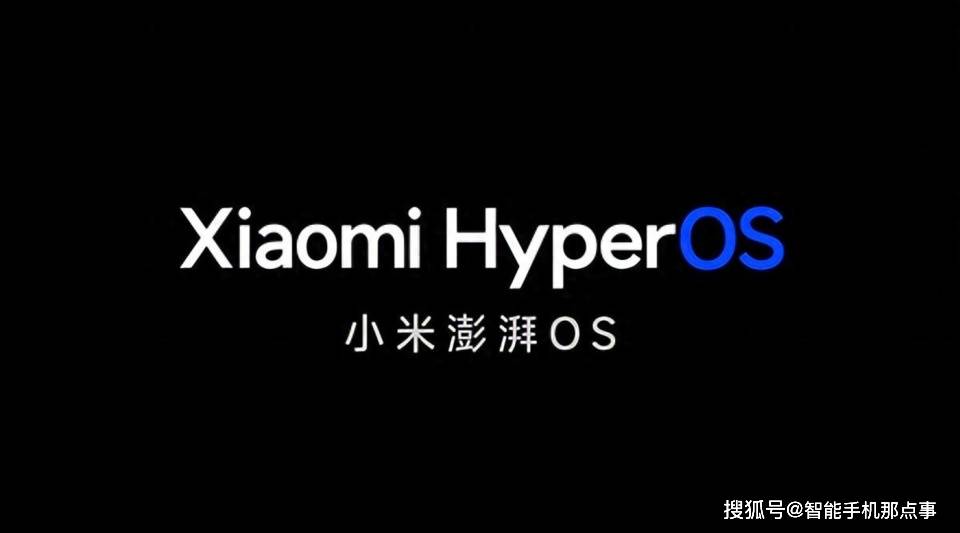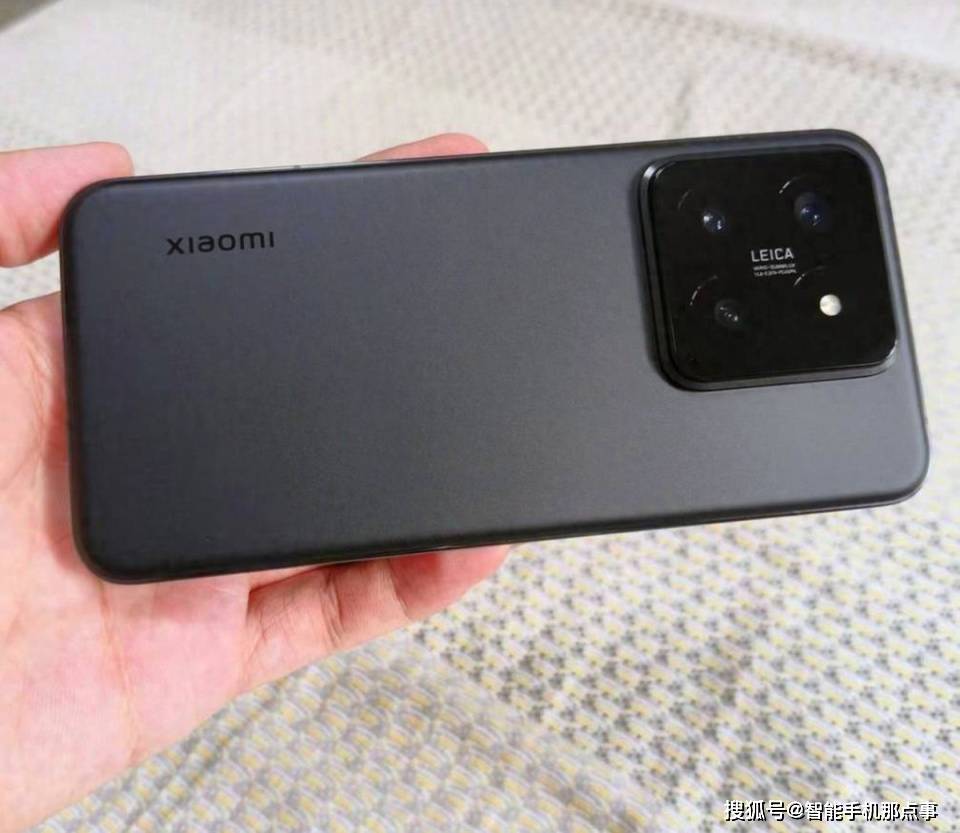 Technology peripherals
Technology peripherals
 AI
AI
 AI technology is coming! Xiaomi Mi 14 has released a new version of ThePaper OS development version. Have you received it?
AI technology is coming! Xiaomi Mi 14 has released a new version of ThePaper OS development version. Have you received it?
AI technology is coming! Xiaomi Mi 14 has released a new version of ThePaper OS development version. Have you received it?
In order to make the experience of using mobile phone products very good, mobile phone manufacturers are very good at optimization. Otherwise, the market competition is very fierce. If it is not recognized by users, the consequences will be needless to say.
Because the competition in the current mobile phone system market is also very fierce, it is difficult for both the flagship mobile phone market and the mid-to-low-end mobile phone market to develop smoothly.
Faced with this situation, many brands are now making crazy efforts on the road to optimization, among which Xiaomi’s Thermal OS system has never stopped making efforts.
Xiaomi 14 series not only launches a new version, but also brings further fixes to enhance consumers’ experience

It is reported that the Xiaomi Mi 14 mobile phone has now pushed the Thermal OS 1.0.23.11.17.DEV development version update. The installation package size is 194MB and has added support for HyperMind.
What you need to understand is that this version is a development version, not an official version. For rice noodles who don’t like to try new things, it is not particularly recommended that you upgrade.
Because the pace of life of current users is very fast, if there is no high stability, it will cause huge pressure on daily use and the user's mood.
Therefore, every time a development version or official version is launched, I suggest that you wait and see for a while to see the overall response before deciding whether to update

The scope of changes in this update is very large. The data shows a forward-looking AI architecture that supports the practical application of the most advanced AI technology in the system (under internal testing)
The new generation of Xiaomi HyperMind has a cross-platform intelligent thinking center and supports powerful edge AI algorithm deployment capabilities. Through full-modal perception capabilities, peripheral devices can automatically operate collaboratively on the basis of habits
At the same time, it also has a deep integration of AI large model technology and system applications. It can be said that this update mainly makes crazy efforts in AI.
This is also one of the next market development directions. The reason is that AI technology has gradually matured. Only by gradually entering can we gain a better foothold.

Xiaomi’s AI technology is not bad either, because Hyper Mind is Xiaomi’s multi-terminal intelligent thinking center. It can comprehensively use the four major sensory capabilities of environment, vision, hearing, and behavior through Xiaomi devices.
Then learn the user's habits and preferences, and provide proactive smart services, such as automatically lowering the TV volume when the user answers the phone and restoring the volume after hanging up.
Or maybe the user automatically turns on the lights at home when he returns home in the evening, or automatically turns on the night light when he returns home late at night. These are all critical details.
So for consumers, once they can enjoy these functions, it will be really convenient in terms of daily use experience.

In fact, Xiaomi mobile phones have been preparing for a long time in terms of AI. Xiaomi established its own AI large model team as early as April this year. The main breakthrough direction is lightweight local deployment.
Xiaomi previously disclosed a large parameter model worth 6.4 billion on GitHub, which achieved the best performance of the same scale in both C-Eval and CMMLU benchmarks
In addition, the latest version of Xiaomi's AI large model, MiLM-1.3B, has been successfully run locally on mobile phones, and some scenarios can be comparable to the results of running a 6 billion parameter model in the cloud.
So as long as Xiaomi mobile phones are given enough time, the future market optimization path will definitely get better and better, which is also the key to bringing excellent experience to consumers.

Currently, Xiaomi Mi 14 series has begun to push updates, and other models will soon follow. The author believes that an update will be pushed soon
For example, Xiaomi 13/Pro/Ultra series, Redmi K60/Pro series and other models have previously released ThePaper OS1.0.23.11.8.DEV and 1.0.23.11.13.DEV development versions
It is expected to catch up with the progress of Xiaomi 14 series soon, because these models are very powerful, and getting the upgrade push as soon as possible will further promote the brand’s sales development.
So for consumers, they can really wait patiently. At least from an optimization point of view, it is still worthy of everyone's attention.

The last thing I want to emphasize is that the Xiaomi Pascal OS system has been upgraded very quickly. Mi fans who are currently encountering usage problems can try it out.
Then the question is, has everyone upgraded their experience? Welcome to reply to the discussion.
The above is the detailed content of AI technology is coming! Xiaomi Mi 14 has released a new version of ThePaper OS development version. Have you received it?. For more information, please follow other related articles on the PHP Chinese website!

Hot AI Tools

Undresser.AI Undress
AI-powered app for creating realistic nude photos

AI Clothes Remover
Online AI tool for removing clothes from photos.

Undress AI Tool
Undress images for free

Clothoff.io
AI clothes remover

Video Face Swap
Swap faces in any video effortlessly with our completely free AI face swap tool!

Hot Article

Hot Tools

Notepad++7.3.1
Easy-to-use and free code editor

SublimeText3 Chinese version
Chinese version, very easy to use

Zend Studio 13.0.1
Powerful PHP integrated development environment

Dreamweaver CS6
Visual web development tools

SublimeText3 Mac version
God-level code editing software (SublimeText3)

Hot Topics
 Four recommended AI-assisted programming tools
Apr 22, 2024 pm 05:34 PM
Four recommended AI-assisted programming tools
Apr 22, 2024 pm 05:34 PM
This AI-assisted programming tool has unearthed a large number of useful AI-assisted programming tools in this stage of rapid AI development. AI-assisted programming tools can improve development efficiency, improve code quality, and reduce bug rates. They are important assistants in the modern software development process. Today Dayao will share with you 4 AI-assisted programming tools (and all support C# language). I hope it will be helpful to everyone. https://github.com/YSGStudyHards/DotNetGuide1.GitHubCopilotGitHubCopilot is an AI coding assistant that helps you write code faster and with less effort, so you can focus more on problem solving and collaboration. Git
 The Stable Diffusion 3 paper is finally released, and the architectural details are revealed. Will it help to reproduce Sora?
Mar 06, 2024 pm 05:34 PM
The Stable Diffusion 3 paper is finally released, and the architectural details are revealed. Will it help to reproduce Sora?
Mar 06, 2024 pm 05:34 PM
StableDiffusion3’s paper is finally here! This model was released two weeks ago and uses the same DiT (DiffusionTransformer) architecture as Sora. It caused quite a stir once it was released. Compared with the previous version, the quality of the images generated by StableDiffusion3 has been significantly improved. It now supports multi-theme prompts, and the text writing effect has also been improved, and garbled characters no longer appear. StabilityAI pointed out that StableDiffusion3 is a series of models with parameter sizes ranging from 800M to 8B. This parameter range means that the model can be run directly on many portable devices, significantly reducing the use of AI
 DualBEV: significantly surpassing BEVFormer and BEVDet4D, open the book!
Mar 21, 2024 pm 05:21 PM
DualBEV: significantly surpassing BEVFormer and BEVDet4D, open the book!
Mar 21, 2024 pm 05:21 PM
This paper explores the problem of accurately detecting objects from different viewing angles (such as perspective and bird's-eye view) in autonomous driving, especially how to effectively transform features from perspective (PV) to bird's-eye view (BEV) space. Transformation is implemented via the Visual Transformation (VT) module. Existing methods are broadly divided into two strategies: 2D to 3D and 3D to 2D conversion. 2D-to-3D methods improve dense 2D features by predicting depth probabilities, but the inherent uncertainty of depth predictions, especially in distant regions, may introduce inaccuracies. While 3D to 2D methods usually use 3D queries to sample 2D features and learn the attention weights of the correspondence between 3D and 2D features through a Transformer, which increases the computational and deployment time.
 Which AI programmer is the best? Explore the potential of Devin, Tongyi Lingma and SWE-agent
Apr 07, 2024 am 09:10 AM
Which AI programmer is the best? Explore the potential of Devin, Tongyi Lingma and SWE-agent
Apr 07, 2024 am 09:10 AM
On March 3, 2022, less than a month after the birth of the world's first AI programmer Devin, the NLP team of Princeton University developed an open source AI programmer SWE-agent. It leverages the GPT-4 model to automatically resolve issues in GitHub repositories. SWE-agent's performance on the SWE-bench test set is similar to Devin, taking an average of 93 seconds and solving 12.29% of the problems. By interacting with a dedicated terminal, SWE-agent can open and search file contents, use automatic syntax checking, edit specific lines, and write and execute tests. (Note: The above content is a slight adjustment of the original content, but the key information in the original text is retained and does not exceed the specified word limit.) SWE-A
 Learn how to develop mobile applications using Go language
Mar 28, 2024 pm 10:00 PM
Learn how to develop mobile applications using Go language
Mar 28, 2024 pm 10:00 PM
Go language development mobile application tutorial As the mobile application market continues to boom, more and more developers are beginning to explore how to use Go language to develop mobile applications. As a simple and efficient programming language, Go language has also shown strong potential in mobile application development. This article will introduce in detail how to use Go language to develop mobile applications, and attach specific code examples to help readers get started quickly and start developing their own mobile applications. 1. Preparation Before starting, we need to prepare the development environment and tools. head
 Which Linux distribution is best for Android development?
Mar 14, 2024 pm 12:30 PM
Which Linux distribution is best for Android development?
Mar 14, 2024 pm 12:30 PM
Android development is a busy and exciting job, and choosing a suitable Linux distribution for development is particularly important. Among the many Linux distributions, which one is most suitable for Android development? This article will explore this issue from several aspects and give specific code examples. First, let’s take a look at several currently popular Linux distributions: Ubuntu, Fedora, Debian, CentOS, etc. They all have their own advantages and characteristics.
 Review! Deep model fusion (LLM/basic model/federated learning/fine-tuning, etc.)
Apr 18, 2024 pm 09:43 PM
Review! Deep model fusion (LLM/basic model/federated learning/fine-tuning, etc.)
Apr 18, 2024 pm 09:43 PM
In September 23, the paper "DeepModelFusion:ASurvey" was published by the National University of Defense Technology, JD.com and Beijing Institute of Technology. Deep model fusion/merging is an emerging technology that combines the parameters or predictions of multiple deep learning models into a single model. It combines the capabilities of different models to compensate for the biases and errors of individual models for better performance. Deep model fusion on large-scale deep learning models (such as LLM and basic models) faces some challenges, including high computational cost, high-dimensional parameter space, interference between different heterogeneous models, etc. This article divides existing deep model fusion methods into four categories: (1) "Pattern connection", which connects solutions in the weight space through a loss-reducing path to obtain a better initial model fusion
 More than just 3D Gaussian! Latest overview of state-of-the-art 3D reconstruction techniques
Jun 02, 2024 pm 06:57 PM
More than just 3D Gaussian! Latest overview of state-of-the-art 3D reconstruction techniques
Jun 02, 2024 pm 06:57 PM
Written above & The author’s personal understanding is that image-based 3D reconstruction is a challenging task that involves inferring the 3D shape of an object or scene from a set of input images. Learning-based methods have attracted attention for their ability to directly estimate 3D shapes. This review paper focuses on state-of-the-art 3D reconstruction techniques, including generating novel, unseen views. An overview of recent developments in Gaussian splash methods is provided, including input types, model structures, output representations, and training strategies. Unresolved challenges and future directions are also discussed. Given the rapid progress in this field and the numerous opportunities to enhance 3D reconstruction methods, a thorough examination of the algorithm seems crucial. Therefore, this study provides a comprehensive overview of recent advances in Gaussian scattering. (Swipe your thumb up





